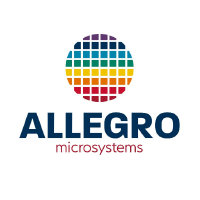
Allegro Microsystems Inc
NASDAQ:ALGM


| US |

|
Johnson & Johnson
NYSE:JNJ
|
Pharmaceuticals
|
| US |

|
Berkshire Hathaway Inc
NYSE:BRK.A
|
Financial Services
|
| US |

|
Bank of America Corp
NYSE:BAC
|
Banking
|
| US |

|
Mastercard Inc
NYSE:MA
|
Technology
|
| US |

|
UnitedHealth Group Inc
NYSE:UNH
|
Health Care
|
| US |

|
Exxon Mobil Corp
NYSE:XOM
|
Energy
|
| US |

|
Pfizer Inc
NYSE:PFE
|
Pharmaceuticals
|
| US |

|
Palantir Technologies Inc
NYSE:PLTR
|
Technology
|
| US |

|
Nike Inc
NYSE:NKE
|
Textiles, Apparel & Luxury Goods
|
| US |

|
Visa Inc
NYSE:V
|
Technology
|
| CN |

|
Alibaba Group Holding Ltd
NYSE:BABA
|
Retail
|
| US |

|
JPMorgan Chase & Co
NYSE:JPM
|
Banking
|
| US |

|
Coca-Cola Co
NYSE:KO
|
Beverages
|
| US |

|
Walmart Inc
NYSE:WMT
|
Retail
|
| US |

|
Verizon Communications Inc
NYSE:VZ
|
Telecommunication
|
| US |

|
Chevron Corp
NYSE:CVX
|
Energy
|
Utilize notes to systematically review your investment decisions. By reflecting on past outcomes, you can discern effective strategies and identify those that underperformed. This continuous feedback loop enables you to adapt and refine your approach, optimizing for future success.
Each note serves as a learning point, offering insights into your decision-making processes. Over time, you'll accumulate a personalized database of knowledge, enhancing your ability to make informed decisions quickly and effectively.
With a comprehensive record of your investment history at your fingertips, you can compare current opportunities against past experiences. This not only bolsters your confidence but also ensures that each decision is grounded in a well-documented rationale.
Do you really want to delete this note?
This action cannot be undone.

| 52 Week Range |
16.53
37.51
|
| Price Target |
|
We'll email you a reminder when the closing price reaches USD.
Choose the stock you wish to monitor with a price alert.

|
Johnson & Johnson
NYSE:JNJ
|
US |

|
Berkshire Hathaway Inc
NYSE:BRK.A
|
US |

|
Bank of America Corp
NYSE:BAC
|
US |

|
Mastercard Inc
NYSE:MA
|
US |

|
UnitedHealth Group Inc
NYSE:UNH
|
US |

|
Exxon Mobil Corp
NYSE:XOM
|
US |

|
Pfizer Inc
NYSE:PFE
|
US |

|
Palantir Technologies Inc
NYSE:PLTR
|
US |

|
Nike Inc
NYSE:NKE
|
US |

|
Visa Inc
NYSE:V
|
US |

|
Alibaba Group Holding Ltd
NYSE:BABA
|
CN |

|
JPMorgan Chase & Co
NYSE:JPM
|
US |

|
Coca-Cola Co
NYSE:KO
|
US |

|
Walmart Inc
NYSE:WMT
|
US |

|
Verizon Communications Inc
NYSE:VZ
|
US |

|
Chevron Corp
NYSE:CVX
|
US |
This alert will be permanently deleted.
Allegro Microsystems Inc
Allegro Microsystems Inc. stands as a cornerstone in the semiconductor industry, specializing in integrated circuits that play a pivotal role in motion control, energy-efficient systems, automotive safety, and industrial applications. Founded with a focus on providing innovative solutions, Allegro leverages its expertise in analog circuits and embedded systems to address complex technological challenges. The company designs, manufactures, and sells sensor integrated circuits (ICs) and application-specific analog power ICs, which are embedded in a multitude of products around the world. These devices are essential in controlling motors, sensors, and lighting systems, making them indispensable components in the automotive, industrial, and consumer electronics sectors.
Strategic innovation is at the heart of Allegro’s business model, as it continually enhances its product offerings to meet evolving market demands. By investing in cutting-edge research and development, Allegro consistently delivers high-performance solutions that enable greater efficiency, safety, and sustainability in electronic systems. Their ICs are used in a variety of applications, such as enabling precise motor control in electric and hybrid vehicles or enhancing energy efficiency in renewable power technologies. By embedding its products into next-generation systems, Allegro Microsystems effectively ensures a steady revenue stream while maintaining strong relationships with an array of international clients. Through these efforts, the company not only generates significant revenue but also cements its leadership in a highly competitive global market.

Allegro Microsystems Inc. stands as a cornerstone in the semiconductor industry, specializing in integrated circuits that play a pivotal role in motion control, energy-efficient systems, automotive safety, and industrial applications. Founded with a focus on providing innovative solutions, Allegro leverages its expertise in analog circuits and embedded systems to address complex technological challenges. The company designs, manufactures, and sells sensor integrated circuits (ICs) and application-specific analog power ICs, which are embedded in a multitude of products around the world. These devices are essential in controlling motors, sensors, and lighting systems, making them indispensable components in the automotive, industrial, and consumer electronics sectors.
Strategic innovation is at the heart of Allegro’s business model, as it continually enhances its product offerings to meet evolving market demands. By investing in cutting-edge research and development, Allegro consistently delivers high-performance solutions that enable greater efficiency, safety, and sustainability in electronic systems. Their ICs are used in a variety of applications, such as enabling precise motor control in electric and hybrid vehicles or enhancing energy efficiency in renewable power technologies. By embedding its products into next-generation systems, Allegro Microsystems effectively ensures a steady revenue stream while maintaining strong relationships with an array of international clients. Through these efforts, the company not only generates significant revenue but also cements its leadership in a highly competitive global market.
Strong Q2 Performance: Allegro delivered Q2 revenue of $214 million, gross margin of 49.6%, and EPS of $0.13, all above the midpoint of guidance.
Growth Drivers: Automotive sales rose 8% sequentially and 12% year-over-year, with e-mobility up 21% year-over-year; data center sales set a new record.
Margins Expand: Gross margin increased 140 basis points sequentially despite some cost headwinds, driven by operational efficiency and product mix.
Positive Outlook: Q3 sales are guided between $215 million and $225 million, implying 24% year-over-year growth, with gross margin expected in the 49%–51% range.
Design Win Momentum: The company reported strong design wins in e-mobility, data center, and robotics, underscoring expanding content opportunities.
Inventory & Channel: Inventory burn continued in Q2, with distributor inventory declining; management believes this process is nearing completion.
Pricing Stability: Pricing is expected to remain more stable into next year, with less downward pressure than in prior periods.
Data Center Strength: Data center growth driven by increased power and cooling needs for AI servers, with content per rack rising and new products ramping.







































